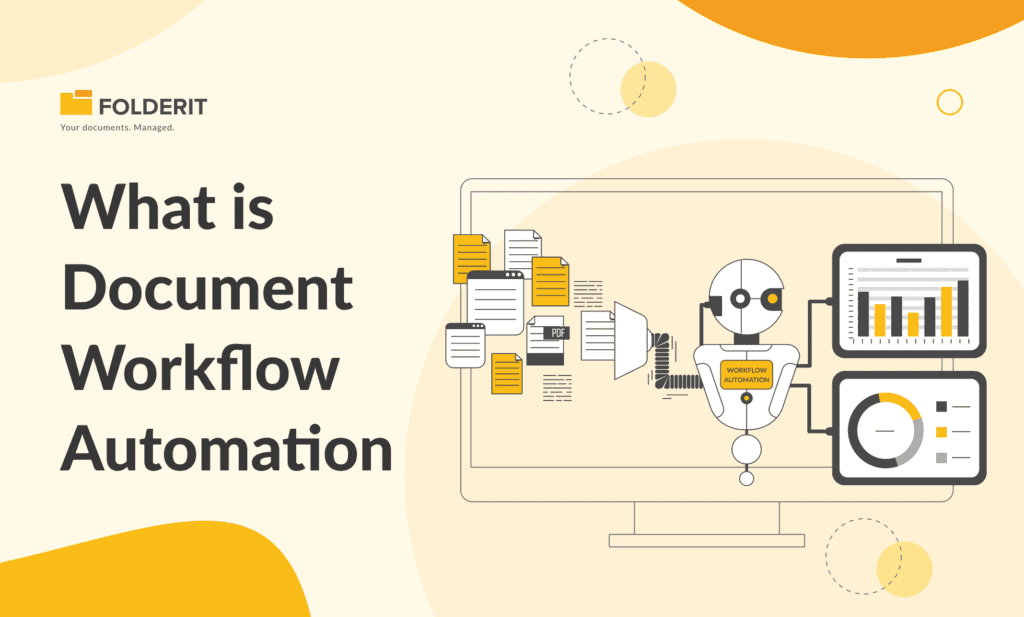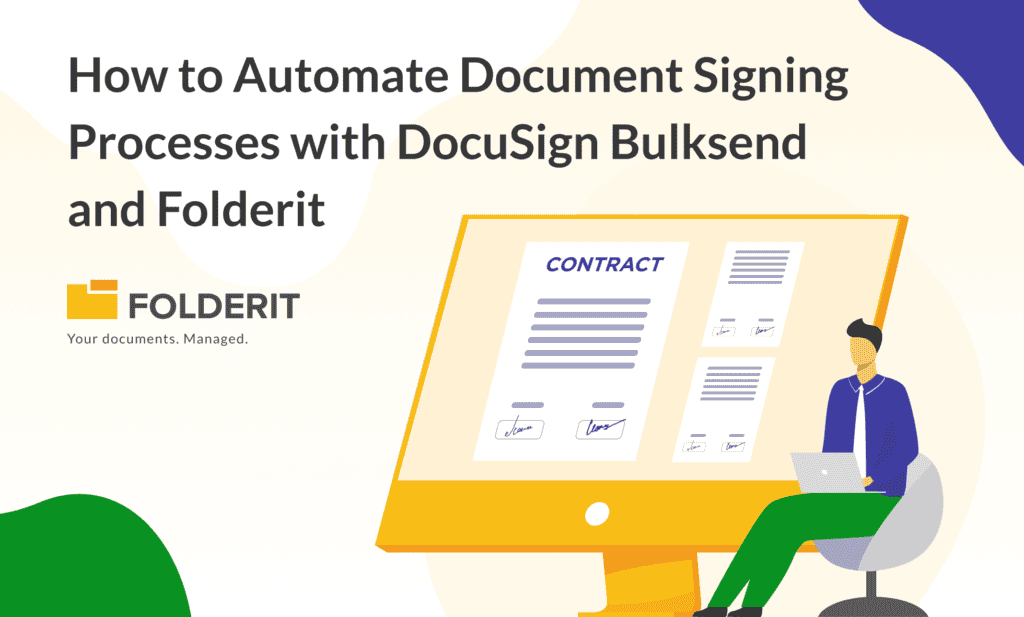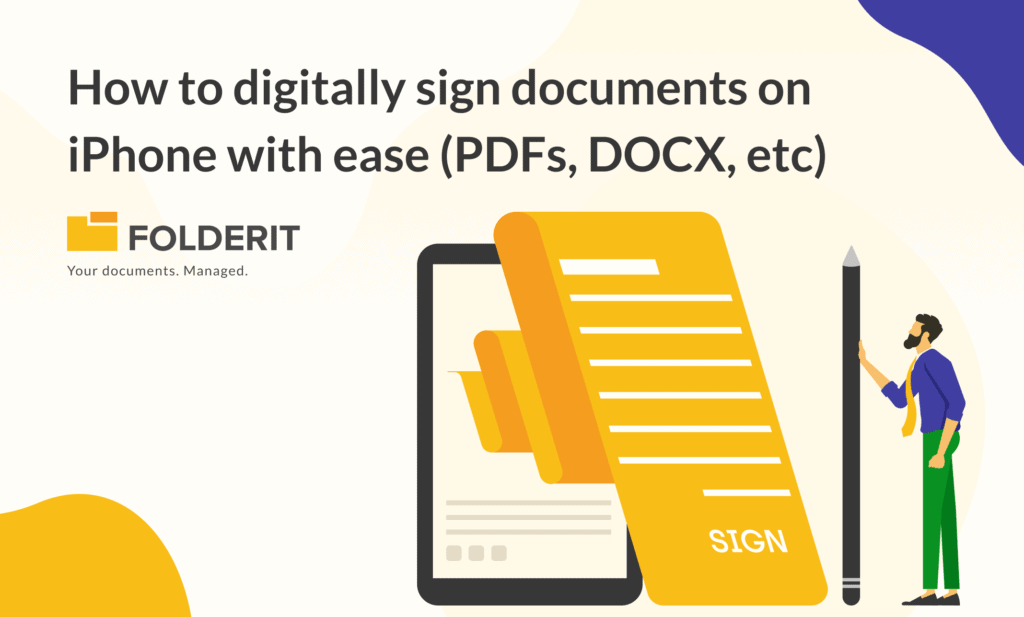Document workflow automation is the unsung hero in the quest for peak operational efficiency, propelling businesses into a future where the focus shifts from mundane tasks to strategic growth. It's the art of transforming a paper trail into a digital expressway, ensuring that the right information reaches the right hands at lightning speed.
In practice, document automation means that when a document is created or received, the system automatically classifies it, extracts relevant data, and determines the next steps in its journey. This could be routing it for approvals, triggering related tasks, or archiving it securely. The goal is to minimize manual intervention, reduce errors, and speed up processes that involve documents.
The Evolution of Document Workflow
The journey from cabinets filled with paper to cloud-based systems has been revolutionary. Document management once meant physical storage, manual sorting, and time-consuming retrieval.
Today, automation has redefined this landscape. The shift towards automated workflows represents a significant leap from the manual, error-prone processes of yesteryears to a streamlined, error-free, and efficient system that is the backbone of modern enterprises.
Key Components of Document Workflow Automation
At its core, document workflow automation comprises several critical components:
- Document Capture and Digitization: This is the first step where documents are converted from physical to digital form, ready to be injected into the workflow.
- Routing and Distribution: Once digitized, documents are automatically routed to appropriate departments or personnel, ensuring no time is lost in transitions.
- Integration: A robust automation system seamlessly integrates with existing business systems, such as CRM and ERP, to create a cohesive environment where data flows freely and securely.
How Document Workflow Automation Works
Imagine a document entering the digital workflow: it's scanned, its data is extracted and analyzed, and then it's whisked away to its next destination—all without human intervention. This is the magic of automation. Document management software and AI algorithms work in tandem to perform tasks that were once manual, from data entry to complex decision-making processes, ensuring that every step is optimized for speed and accuracy.
Benefits of Document Workflow Automation
The advantages of automating document workflows are:
- Efficiency and Productivity: Automation accelerates document processing, freeing up valuable time for employees to focus on higher-value work.
- Accuracy: With reduced human intervention comes a significant decrease in errors, ensuring data integrity and reliability.
- Compliance and Security: Automated workflows are designed to adhere to regulatory standards, providing audit trails and safeguarding sensitive information against unauthorized access.
Implementing Document Workflow Automation
Adopting document workflow automation requires a strategic approach. Among them are::
- ‘Needs’ Assessment: Businesses must first understand their unique needs and map out existing workflows to identify areas ripe for automation.
- Tool Selection: The market offers a plethora of automation tools; selecting one that aligns with business objectives and integrates well with existing systems is crucial.
- Training and Adoption: For successful implementation, stakeholders must be trained, and the benefits of the new system must be communicated effectively to ensure widespread adoption.
Applications of Document Workflow Automation
In healthcare, document workflow automation ensures patient records are updated in real-time, and accessible by the right medical staff when needed, enhancing patient care.
In finance, automated workflows expedite loan processing, from application to approval, minimizing wait times for customers and reducing workload for staff.
The Challenges of Document Workflow Automation
While the benefits are clear, the road to automation can be fraught with challenges:
- Resistance to Change: Employees accustomed to traditional methods may resist new systems. Overcoming this requires demonstrating the tangible benefits of automation.
- Complexity of Implementation: Tailoring an automation system to fit intricate, existing workflows can be complex, necessitating a thoughtful approach to integration.
- Cost: Initial setup costs can be significant, though they are often offset by the long-term savings automation brings.
Measuring the Success of Automation Initiatives
Success in automation is measured by increased efficiency, reduced error rates, and improved compliance. Regular audits and performance metrics are essential to ensure the system delivers on its promise.
The Future of Document Workflow Automation
As technology advances, we can expect even more sophisticated automation solutions. AI and machine learning will play larger roles, predicting needs, and further streamlining workflows.
Folderit and Document Workflow Automation
Folderit stands out with its precision-engineered features designed to automate and streamline document workflows. Here’s how Folderit specifically addresses workflow automation:
- Custom Workflow Creation: With its integration with MAKE (formerly Integromat), Folderit empowers users to design workflows that mirror their unique business processes. This customization extends to setting up specific actions that occur when documents are added or modified, such as automatic metadata assignment, which enhances searchability and organization.
- Automated Notifications and Reminders: The system is adept at sending out automated email notifications and reminders when tasks are due or when a document moves to the next stage in the workflow, ensuring timely actions and responses.
- Configurable Approval Processes: Folderit's approval process is highly configurable, allowing for sequential and parallel approval chains. This flexibility ensures that documents can be reviewed and approved according to the complexity and hierarchy of the organization.
- Tag-Based Document Routing: Utilizing Folderit’s advanced tagging system, documents can be automatically routed to the appropriate folder or individual based on pre-defined tags. This not only saves time but also ensures that documents are handled by the correct department or team member without manual intervention.
- Integrations with External Applications: Folderit’s API allows for integration with third-party applications, enabling the automation of document capture from emails or other software systems directly into the Folderit system, maintaining a consistent and automated flow of information.
- Document Version Control: As part of the workflow, Folderit manages document versions automatically. When a document is updated, the system saves it as a new version, ensuring that the workflow is always moving forward with the most current information.
- Role-Based Access Control: Folderit’s granular permission settings facilitate role-based access control within the workflow. Users can be given specific rights to view, edit, approve, or delete documents based on their role in the workflow, enhancing security and compliance.
- Audit Trails: Every action taken on a document within Folderit is logged in an audit trail. This feature is crucial for workflows that require tracking and accountability, such as those involving sensitive or regulated information.
Embracing the Future with Document Workflow Automation
Document workflow automation is a strategic imperative for businesses aiming to thrive in a competitive landscape. With systems like Folderit, organizations can leapfrog into a future where document management is no longer a chore but a strategic asset driving growth and innovation. As we embrace this automated future, the potential for efficiency and productivity is boundless, limited only by our willingness to adapt and adopt.



